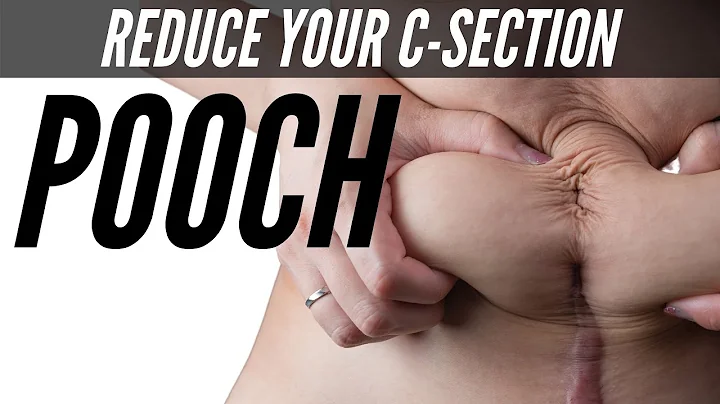Relieve Jaw Pain and Headaches: Techniques for Releasing the Masseter Muscle
Table of Contents
1. Introduction
2. Understanding the Masseter Muscle
### 2.1 The Location and Function of the Masseter Muscle
### 2.2 Common Dysfunctions and Symptoms
3. Techniques for Releasing the Masseter Muscle
### 3.1 External Release Technique
### 3.2 Internal Release Technique
4. Benefits of Masseter Muscle Release
### 4.1 Alleviation of Jaw Pain and Discomfort
### 4.2 Reduction of Headaches Associated with TMJ Disorders
### 4.3 Decreased Tension from Clenching and Grinding
5. Precautions and Considerations
### 5.1 Consulting a Dentist or TMJ Specialist
### 5.2 Proper Technique and Gradual Pressure
### 5.3 Personal Sensitivity and Individual Results
6. Conclusion
Understanding the Masseter Muscle
The Masseter muscle, located in the jaw area, is the largest and most powerful muscle of mastication. Its primary function is to elevate and protrude the jaw, allowing for the closure and forward movement of the mouth. However, when the Masseter muscle becomes dysfunctional or goes into a chronic pain/spasm cycle, it can cause a range of discomfort, including jaw pain and headaches. In this article, we will explore the anatomy and function of the Masseter muscle and discuss techniques for releasing tension and promoting relief.
The Location and Function of the Masseter Muscle
The Masseter muscle originates from the zygomatic arch and inserts into the angle and ramus of the mandible. This muscle is responsible for the elevation and protrusion of the jaw, allowing us to perform essential functions such as chewing and speaking. Due to its size and strength, the Masseter muscle can easily become overworked or strained, leading to various TMJ disorders.
Common Dysfunctions and Symptoms
When the Masseter muscle is dysfunctional, it can result in a variety of symptoms and discomfort. Jaw pain is one of the most prominent symptoms, which can often radiate to the temple region, causing headaches. Additionally, individuals experiencing Masseter muscle dysfunction may also suffer from difficulty in opening or closing their mouths fully. This dysfunction is often associated with habits such as clenching and grinding of the teeth, which can further aggravate the condition.
Techniques for Releasing the Masseter Muscle
Releasing tension in the Masseter muscle can promote relief and alleviate associated symptoms. There are two primary techniques for releasing the Masseter muscle: external and internal.
External Release Technique
To perform the external release technique, start by locating the zygomatic arch, which is the cheekbone. Place your middle knuckles underneath the zygomatic arch at its bottom edge. Apply gradual pressure and slowly slide the knuckles down towards the angle of the mandible. Repeat this motion several times to provide a deep release for the Masseter muscle. The external release technique is particularly effective for individuals who frequently clench and grind their teeth.
Internal Release Technique
The internal release technique targets the deeper fibers of the Masseter muscle. Using your thumb and index finger, reach inside your mouth and grab the inside of your cheek, as far back as possible. Pinch the muscle gently and move your fingers along the length of the Masseter muscle, running perpendicular to the direction of the fibers. Repeat this motion, adjusting the position of your fingers to cover the entire muscle. The internal release technique provides a thorough release for both superficial and deep fibers of the muscle.
Benefits of Masseter Muscle Release
The regular practice of releasing and relaxing the Masseter muscle can result in several significant benefits for individuals with TMJ disorders.
Alleviation of Jaw Pain and Discomfort
By releasing tension in the Masseter muscle, individuals can experience a notable reduction in jaw pain and discomfort. The targeted pressure applied during the release techniques helps to relax the muscle, providing relief from chronic spasm or tightness.
Reduction of Headaches Associated with TMJ Disorders
Headaches often accompany TMJ disorders due to the interconnectedness of the jaw and the skull. Releasing the Masseter muscle can help alleviate headaches by reducing the tension and strain present in the jaw area.
Decreased Tension from Clenching and Grinding
For individuals who frequently clench and grind their teeth, actively releasing the Masseter muscle can significantly reduce tension in the jaw. This practice can help break the cycle of clenching and grinding, leading to diminished discomfort and improved jaw mobility.
Precautions and Considerations
While the techniques for releasing the Masseter muscle are generally safe, it is important to exercise caution and seek professional guidance if necessary.
Consulting a Dentist or TMJ Specialist
If you are experiencing chronic jaw pain or suspect you have a TMJ disorder, it is advisable to consult a dentist or TMJ specialist. They can provide a comprehensive examination, diagnose any underlying issues, and recommend appropriate treatment options.
Proper Technique and Gradual Pressure
When performing the release techniques, it is essential to use proper technique and apply gradual pressure. Avoid excessive force or overexertion, as this can lead to additional discomfort or injury. Listen to your body and adjust the pressure according to your own comfort level.
Personal Sensitivity and Individual Results
It is important to recognize that individual results may vary, and what works for one person may not be as effective for another. Some individuals may have greater sensitivity or specific conditions that require tailored approaches. Be mindful of your body's response and make adjustments accordingly.
Conclusion
Releasing tension in the Masseter muscle can provide much-needed relief for individuals suffering from TMJ disorders. By applying the external and internal release techniques, individuals can effectively target both superficial and deep fibers of the muscle. The benefits of regular Masseter muscle release include reduced jaw pain, alleviation of headaches, and decreased tension from clenching and grinding. As always, it is essential to consult a healthcare professional for a thorough evaluation and personalized advice based on your specific condition.
Highlights
- The Masseter muscle plays a crucial role in jaw movement and chewing function.
- Dysfunction of the Masseter muscle can lead to jaw pain, headaches, and limited mouth opening and closing.
- External and internal release techniques can effectively release tension and provide relief.
- Regular Masseter muscle release can alleviate jaw pain, reduce headaches, and decrease tension from clenching and grinding.
FAQs
Q: How can I tell if I have dysfunction in my Masseter muscle?
A: Dysfunction in the Masseter muscle can manifest as jaw pain, headaches, and difficulty in fully opening or closing the mouth. If you experience these symptoms, it is advisable to consult a dentist or TMJ specialist for a thorough evaluation.
Q: How often should I perform Masseter muscle release techniques?
A: The frequency of performing Masseter muscle release techniques can vary from person to person. It is advisable to start with a few times a week and gradually increase or decrease based on your body's response. Consult a healthcare professional for personalized recommendations.
Q: Can Masseter muscle release techniques completely cure TMJ disorders?
A: Masseter muscle release techniques can help alleviate symptoms and provide relief for individuals with TMJ disorders. However, complete resolution of the disorder may require a comprehensive treatment approach, which may include lifestyle changes, dental interventions, or physical therapy. Consult a healthcare professional for a tailored treatment plan.







